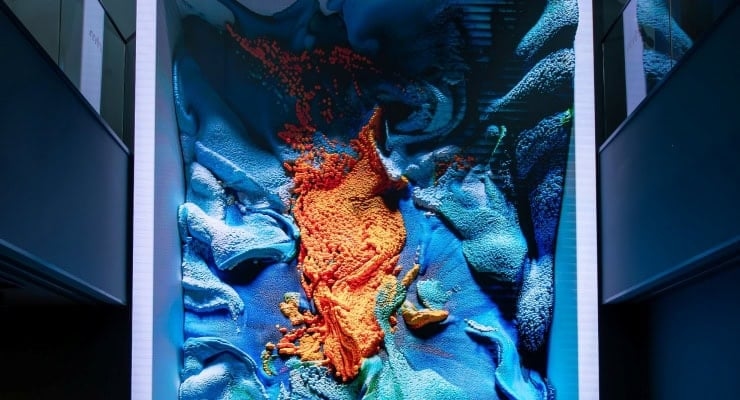The sea drags it to the shore, he collects it: He turns it into a work of art.


Having developed her own field over time, Turkishlik decided to turn amphora pieces, thought to have washed ashore from shipwrecks dating back to between the 2nd and 13th centuries AD, around the ancient city of Tios in the town of Filyos, into necklaces. Inspired by the lines from a Lycian poem estimated to have been written approximately 3,000 years ago: "Don't be sad if you can't find me, you will find my belongings. You will find the stones I cut, the paths I paved, the sculptures I carved, and you will see that, from thousands of years ago, our fingerprints will touch each other," Turkishlik processed amphora stones bearing traces of the past and turned them into necklaces with stories. Carrying the traces of the past into the present with each piece, Turkishlik gifts her products to people who visit the town for touristic purposes. "I DEVELOPED IT BY MYSELF" Mehmet Türkçelik told an Anadolu Agency (AA) reporter that there was an ancient city in the town and that amphora fragments from a sunken ship washed ashore. Expressing his value for the necklaces he made, Türkçelik said, "Can you imagine something someone touched two thousand years ago, two thousand years later, on your neck. It touches your skin. I think, 'This is very impressive.' That's why, when I make these, I try to create and carve something appropriate for them, embodying those feelings."

Turkishness, recalling lines from a Lycian poem thought to have been written approximately 3,000 years ago, says, "Here too, he says, 'The day will come when my hands will touch yours.' Indeed, hands touch hands. In other words, the things he carved, the pieces he made, are on us, around our necks, two thousand years later." " he spoke. Indicating that his interest in carving began with chalk in primary school, Türkçelik stated that he was making Native American totems during that time. Emphasizing that he did not receive any training from anyone, Türkçelik said: "It doesn't require training anyway. If you have an artist or an artistic spirit or the spirit of seeing something beautiful inside you, you see something and you say, 'I can create something.' That's why I developed myself. No one told me, 'Do this.' There aren't any people around us who do it anyway, but my enthusiasm grew as I received positive feedback. I follow today's arts to see how artworks develop." Explaining that he creates his works without any prior planning and that each one takes shape spontaneously throughout the process, Türkçelik explained that in addition to amphorae, he also works with pieces of twigs he collects from the beach.

Turkishness stated that the shapes of the materials contribute to the creation of the products she makes, saying, "The tree guides you. You become friends with the tree in a way. It says, 'Don't push me too hard, I'll break if you do.' That's why I make it without pushing it too much, by getting along amicably and understanding each other."Prof. Dr. Türkçelik, recalling that he found his identity after Serpil Oppermann referred to him as a "marine sculptor," said he now considers himself a marine sculptor. Türkçelik emphasized that he doesn't worry about making money from his creations, continuing: "I make them, then I give them as a gift. The sea threw them away. I made them this way, I made them that way, and they're like this. And you can't give them away; you get jealous. That's why I can't sell them for money either. When I sell them for money, it feels like I'm betraying them. It's like I'm giving my child away for adoption. So, when you don't have to worry about money, you create however you want. If I create, I think, 'Let it benefit those around me, too.'" Türkçelik, mentioning that children sometimes come to his workshop, said, "They'll ask me, 'Can we make something?' I'll say, 'Of course, come on.' I sit here and spread the trees out in front of them. Children's imaginations are completely different. They're even broader than mine. Sometimes I copy them."
ntv





